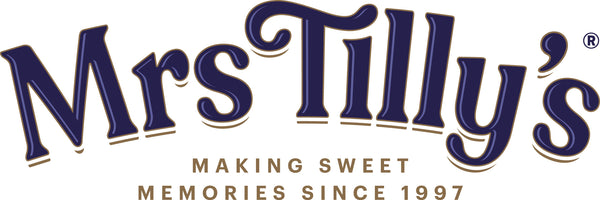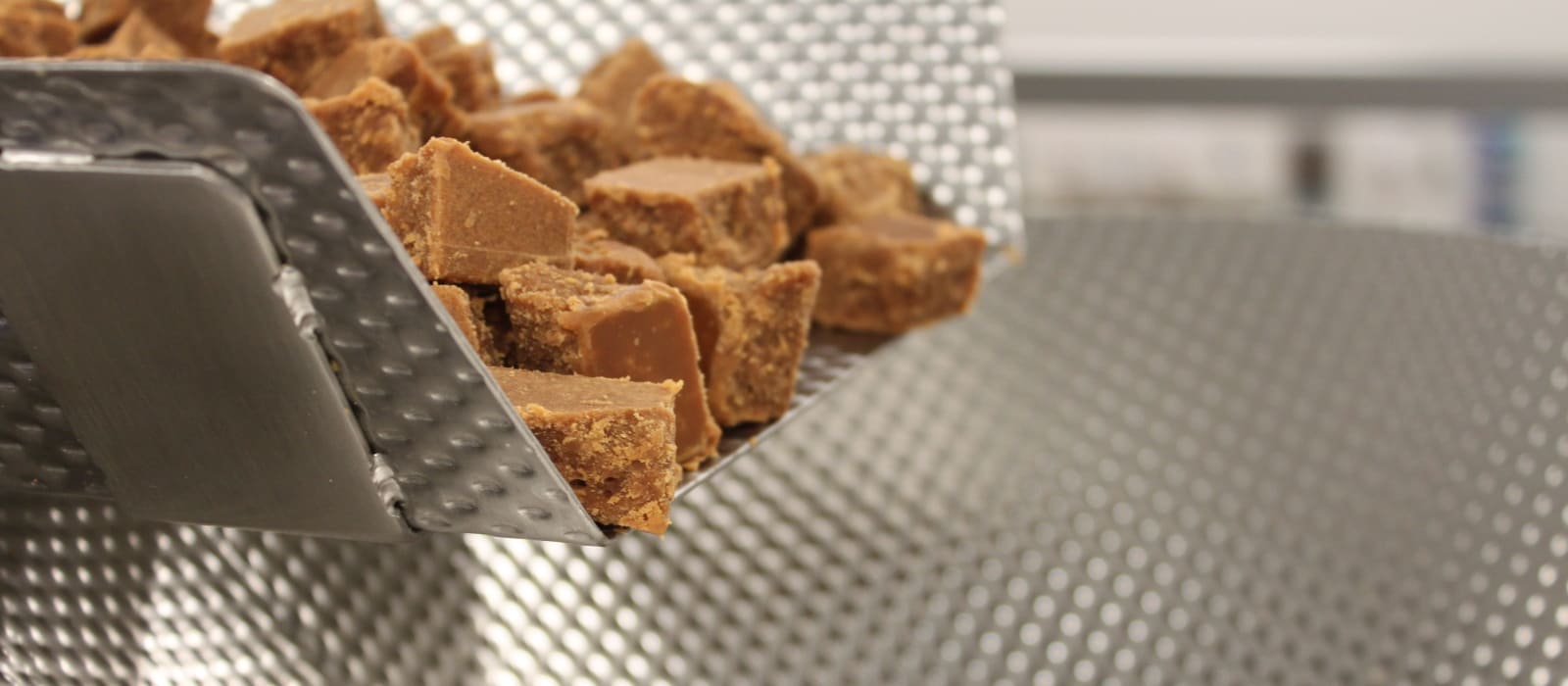Scottish tablet is a beloved traditional sweet in Scotland, known for its sweet, crumbly texture. This confectionery has deep roots in Scottish history, with its origins traced back to the early 18th century. One of the earliest documented recipes was found in The Household Book of Lady Grisell Baillie. Traditionally, the recipe included sugar and cream, but modern adaptations often use condensed milk and butter to achieve the desired consistency and flavour.
Culturally, a Scottish tablet is more than just a treat—it symbolises Scottish hospitality and celebration. It is often served at weddings, holidays, and special gatherings, embodying a sense of comfort and tradition. The sweet's enduring popularity extends beyond Scotland, capturing the hearts of many worldwide who enjoy its unique texture and rich, buttery flavour.
2. What is Scottish Tablet?
Scottish tablet is a distinctive confectionery, beloved for its unique texture and taste. It is primarily made from sugar, butter, and condensed milk, creating a firm yet melt-in-the-mouth consistency. The mixture is cooked to a caramel-like state, beaten, and then allowed to cool and set, resulting in a sweet that is both smooth and slightly grainy.
Key Ingredients and Traditional Preparation Methods
The essential ingredients for Scottish tablet include granulated sugar, butter, and condensed milk. The preparation involves slowly heating these components until the sugar dissolves, followed by boiling the mixture. Constant stirring is crucial to prevent burning and ensure even cooking. Once the mixture reaches the soft-ball stage—a point where a drop of the mixture in cold water forms a soft ball—it is taken off the heat, beaten to a creamy consistency, and poured into a greased pan to set.
Differences Between Scottish Tablet and Fudge
Although Scottish tablet and fudge share some similarities, they are distinct in texture and preparation. Fudge tends to be smooth and creamy, made with cream and often flavoured with chocolate. In contrast, Scottish tablet is firmer and crumblier due to the use of condensed milk and a different cooking method.
Read also: The Process of Making Traditional Scottish Fudge
Global Variations
While Scottish tablet is unique, similar sweets exist around the world. In Latin America, there’s Dulce de Leche en Tabla, a softer version of the tablet. The Netherlands offers Borstplaat, and in Quebec, Canada, there's Sucre à la Crème. Sometimes referred to as "Swiss Milk Tablet," this name denotes the type of condensed milk used rather than a connection to Switzerland. In New Zealand, a similar confection called Russian Fudge includes golden syrup, adding a distinct flavour twist.
Cultural Significance
Scottish tablet is more than just a sweet treat; it’s a part of Scotland’s cultural fabric. It’s traditionally served at weddings, holidays, and other special occasions, symbolising hospitality and celebration. Many Scots prefer homemade tablet over commercial varieties because it doesn’t contain preservatives and stays true to traditional recipes, offering a superior taste and texture. Tablet is also a popular choice in hotels and B&Bs, often found on tea trays as a welcoming treat.
The Making of Scottish Tablet
Making Scottish tablet involves a few straightforward steps but requires careful attention to detail. Start by combining granulated sugar, butter, and full-fat milk in a large, heavy pot. Heat this mixture slowly until the sugar dissolves completely. Next, add sweetened condensed milk and bring the mixture to a boil, stirring constantly to prevent it from burning.
Once it reaches a caramel colour and a soft-ball stage, where a drop of the mixture in cold water forms a soft ball, remove it from the heat. The mixture is then beaten vigorously until it thickens and loses its gloss. Finally, pour the thickened mixture into a greased pan to cool and set. After setting, typically overnight, it is cut into small squares for serving.
Nutritional Information
Scottish tablet is known for its high sugar content, making it a high-calorie treat. A typical serving of about 28 grams contains:
-
Calories: 132
-
Total Fat: 3g
-
Saturated Fat: 2g
-
Cholesterol: 9mg
-
Sodium: 31mg
-
Carbohydrates: 25g
-
Sugars: 25g
-
Protein: 0g
These values highlight the rich and indulgent nature of this traditional sweet.
Dietary Considerations
Given its high sugar and fat content, Scottish tablet should be enjoyed in moderation. It's best suited for special occasions rather than everyday consumption. Those with dietary restrictions, such as individuals with diabetes or lactose intolerance, should exercise caution. The high simple carbohydrate content can cause rapid spikes in blood sugar levels, so portion control is important.
Read also: Eating Sweets And Treats While On A Diet
Mrs Tilly’s Scottish Tablet Range
Mrs Tilly's offers a delightful range of Scottish tablet products, all crafted to maintain the traditional flavour and texture that has made this sweet a beloved treat. Here are some highlights from their range:
Original Scottish Tablet 150g
It is made using a classic recipe that delivers a rich, buttery flavour. The combination of sugar, butter, and condensed milk creates a crumbly texture that melts in your mouth, making it a perfect treat for those who appreciate authentic Scottish confectionery.
Malt Whisky Scottish Tablet 150g
For an extra kick, the tablet is infused with Scotch whisky, adding depth and warmth to the traditional recipe. This variant offers the same crumbly texture with a unique twist, making it ideal for those who enjoy the fusion of sweet and spirited flavours.
Don’t forget to taste Mrs Tilly’s Tablet Popcorn! Mrs Tilly's commitment to quality and tradition ensures that all their products are made with the finest ingredients and provide a delicious taste of Scotland in every bite.
Enjoying Scottish Tablet
Scottish tablet is a versatile treat that can be enjoyed in various ways. Traditionally, it’s enjoyed on its own, perfect for a sweet treat after dinner or a delightful accompaniment to your afternoon tea. The richness of the tablet can elevate even the simplest moments into something special.
For a twist, try crumbling Scottish tablet over vanilla ice cream. The combination of the tablet’s crumbly texture and the creaminess of the ice cream creates a delightful contrast. Another creative way to enjoy it is by blending a piece into a milkshake, adding a caramel-like taste that enhances the drink’s richness.
Pairing Suggestions:
-
Tea and Coffee: Strong black tea or bold coffee pairs well with the sweetness of Scottish tablet. The slight bitterness of these drinks balances the tablet’s rich flavour. Herbal teas, like peppermint or chamomile, offer refreshing and soothing contrasts .
-
Cheese: Pairing tablet with sharp cheeses like mature cheddar or creamy brie creates a unique and bold flavour combination. The cheese’s tang or creaminess complements the tablet’s sweetness beautifully.
-
Fruits: Crisp apple slices or juicy pear slices can cut through the tablet’s richness. Fresh berries add a refreshing zing, making for a delightful pairing.
-
Desserts: Use tablet as a topping for puddings or mix it with clotted cream for a luxurious dessert experience.
-
Alcoholic Beverages: A glass of Scotch whisky can enhance the sweetness of the tablet, especially if the tablet has a whisky flavour. Dessert wines like port or sherry also pair well, adding a sophisticated touch.
Ideal Occasions for Serving Scottish Tablet: Scottish tablet is perfect for numerous occasions. It’s a traditional treat at weddings, often given as a favour or enjoyed as part of the dessert spread. During holidays, like Hogmanay (Scottish New Year’s Eve), tablet is a staple. It’s also an excellent choice for afternoon tea, dessert, or simply as a sweet snack during any special event.
If you haven’t yet tried Mrs Tilly's Scottish tablet, now is the perfect time. Whether you enjoy it with a cup of tea, pair it with cheese or fruit, or incorporate it into your desserts, Scottish tablet is sure to delight. Experience this classic treat and understand why it has remained a favourite for generations.
For more information, checkout our article Delights Of Scottish Tablet – A Guide To Perfect Pairings And Serving Styles




